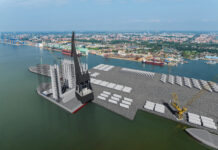Trade figures for the first half of 2018 show growth of 5.2% with increases in both imports and exports. In the high value unitised cargo modes, Ro-Ro freight increased by 4.6% to 508,000 units signalling the likelihood that volumes for the full year will pass the one million units mark for the first time. The port’s container volumes increased by 5.8% to 356,000 TEU.
Imports of new trade vehicles have increased substantially with nearly 63,000 units passing through the port in the first six months of the year, an increase of 11.7% year-on-year.
Tourism volumes are ahead with 2.7% growth bringing ferry passenger numbers to almost 800,000 in the first six months of the year. There has also been substantial growth in cruise calls with 64 cruise calls so far this year compared to 50 last year.
Finally, imports of petroleum products and animal feed drove growth of 11.5% in bulk commodities to 3.4m tonnes.
Commenting on the half year trade results, Eamonn O’Reilly, Chief Executive said:
“We had budgeted for growth of 5.0% this year but are now running at the higher rate of 5.2%. At this level, by the end of 2018 we will have seen growth of 37% in just six years. This is significantly higher than our Masterplan planning growth rate of 3.3% and highlights the need for us to build additional port capacity at a faster rate. Where we had been planning to invest €600m in the decade to 2027, we now know we need to spend €1,000m if we are to continue to provide capacity for our customers.
“Our investments match those of the major shipping lines such as Irish Ferries, Stena Line and CLdN, all of whom have already or will shortly introduce new larger ships on services between Dublin and both the UK and Continental Europe.
“There is much commentary on BREXIT at the moment and we continue to work with State Agencies such as Revenue and the Department of Agriculture, Food and the Marine to ensure that essential border control and inspection facilities are in place for March 2019, for December 2020 or whenever they might be required, if at all.
“Critically, however, we have not allowed BREXIT and all its uncertainties to diminish our focus on the long-term plans for the development of Dublin Port.”





